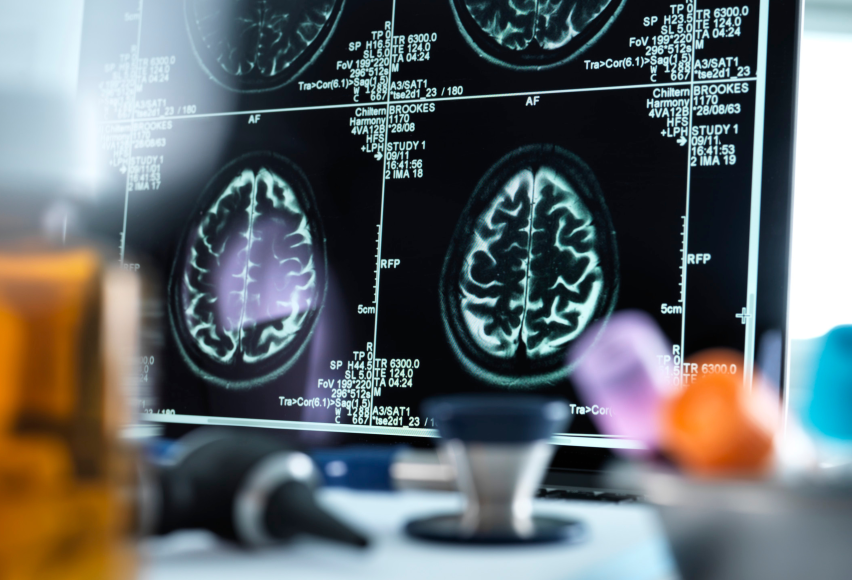The Brain and Skin Picking: What Neuroimaging Is Revealing

Online test
Find out the severity of your symptoms with this free online test
Advances in neuroimaging have given scientists never before abilities to not only understand how our brain functions, but also how it is structured. Not surprisingly, researchers have looked at brain function and structure for a number of mental disorders including obsessive compulsive disorder (OCD) and more recently, the obsessive compulsive related disorders including skin picking disorder (clinically known as excoriation disorder).
Neuroimaging studies have found interesting brain characteristics related to skin picking. For example:
- Compared to people without skin picking, people with skin picking disorder have differences in areas of the brain that are associated with the perception of tactile sensations as well as the processing of emotions. Reduced sensitivity to affective (gentle, caressing-type) touch which may be a factor in skin picking.
- People with skin picking disorder showed deficits in tactile processing areas of the brain responsible for attention, response inhibition, and emotional regulation in response to affective touch. They rated being touched as less pleasant, more arousing, and eliciting a greater urge to pick. Deficits in affective-touch processing are correlated with difficulty managing stress, impaired attachments with others, and poor psychological well-being.
Structurally, the brain seems to differ in important ways too:
- A 2017 study found a positive correlation between impulsiveness and cortical thickness in the left insula in people with skin picking disorder.
- Other findings have revealed differences in the gray matter volume (GMV) in various parts of the brains of people with skin picking disorder compared to those who don’t have the disorder. But results have not been consistent.
But just how brain structure affects skin picking isn’t entirely clear. A new study seeks to take research a step further and look closer at not only brain structure but how it relates to early (prepuberty/puberty) vs later onset (adulthood) picking.
What They Observed
Using the latest technology in fMRI and voxel-based morphometry (VBM), researchers compared neuroanatomical and clinical data from people with skin picking and those without the disorder. Specifically, the researchers examined the GMV in areas of the brain that have been identified as regions of interest (ROIs) from previous studies: insula, orbitofrontalcortex (OFC), basal ganglia, supramarginal gyrus (SMG), and the cerebellum. They further distinguished between those who had early onset (childhood) or a later onset (average age of 19).
The participants with skin picking showed reduced grey matter in those brain regions concerned with evaluating and integrating emotionally relevant information, as well as regions involved in behavioral control:
- The insula is involved in affective processing and interoception (awareness of body sensations). These findings support previous research related to deficits in tactile processing and emotional regulation in people with skin picking. The insula is tightly interconnected with basal ganglia regions (e.g., pallidum) and the OFC.
- The OFC is involved in sensory integration, decision making, inhibitory control and impulse control.
- The pallidum and the cerebellum are also involved in similar processes and play a role in the regulation of voluntary movements.
- The SMG is involved in functions such as integration of sensory information (body awareness) and social cognition.
The study authors note that these findings are similar to studies of obsessive compulsive disorder (OCD).
The subgroup analysis of age of onset of symptoms revealed significant whole-brain findings:
- Those with early onset displayed less GMV in the paracingulate gyrus, which is implicated in reality monitoring, and in the middle temporal gyrus (MTG) which plays a role in reward processing.
Not surprisingly, comorbidity was associated with higher severity of symptoms.
What’s Next?
The results of this study support the need for further study of the brain and the role it plays in disorders like skin picking. Not everyone will experience skin picking in the same way and whether that is due to brain structure remains unknown, but it has implications for treatment.
The literature supports the need for treatment that addresses not only the neurobiological underpinnings of skin picking and similar disorders, but also the emotional impacts of living with the disorder. Individualized, holistic treatment means a more balanced, complete approach that addresses each person’s unique needs and promotes healing.
References
1. Schienle, A., Übel, S., & Wabnegger, A. (2018). Neuronal responses to the scratching and caressing of one's own skin in patients with skin-picking disorder. Human brain mapping, 39(3), 1263–1269. https://pubmed.ncbi.nlm.nih.gov/29218753/
2. Schienle, A., Schlintl, C., & Wabnegger, A. (2023). Brain mechanisms for processing caress-like touch in skin-picking disorder. European Archives of Psychiatry and Clinical Neuroscience. https://link.springer.com/article/10.1007/s00406-023-01669-9
3. Yang, X., & Zhu, X. (2022). Impact and application of affective touch on mental health. Advances in Psychological Science, 30(12), 2789. https://doi.org/10.3724/sp.j.1042.2022.02789
4. Harries, M. D., Chamberlain, S. R., Redden, S. A., Odlaug, B. L., Blum, A. W., & Grant, J. E. (2017). A structural MRI study of excoriation (skin-picking) disorder and its relationship to clinical severity. Psychiatry Research: Neuroimaging, 269, 26-30. https://www.sciencedirect.com/science/article/abs/pii/S0925492717300343?via%3Dihub
5. Schienle, A., & Wabnegger, A. (2020). Two subtypes of pathological skin-picking: Evidence from a voxel-based morphometry study. Journal of Obsessive-Compulsive and Related Disorders, 25, 100534. https://www.sciencedirect.com/science/article/pii/S2211364920300555?via%3Dihub
6. Schienle, A., & Wabnegger, A. (2024). Structural neuroimaging of skin-picking disorder. Progress in Neuro-Psychopharmacology and Biological Psychiatry, 133, 111024. https://doi.org/10.1016/j.pnpbp.2024.111024
Online test
Find out the severity of your symptoms with this free online test
Start your journey with SkinPick
Take control of your life and find freedom from skin picking through professional therapy and evidence-based behavioral techniques.
Start Now



